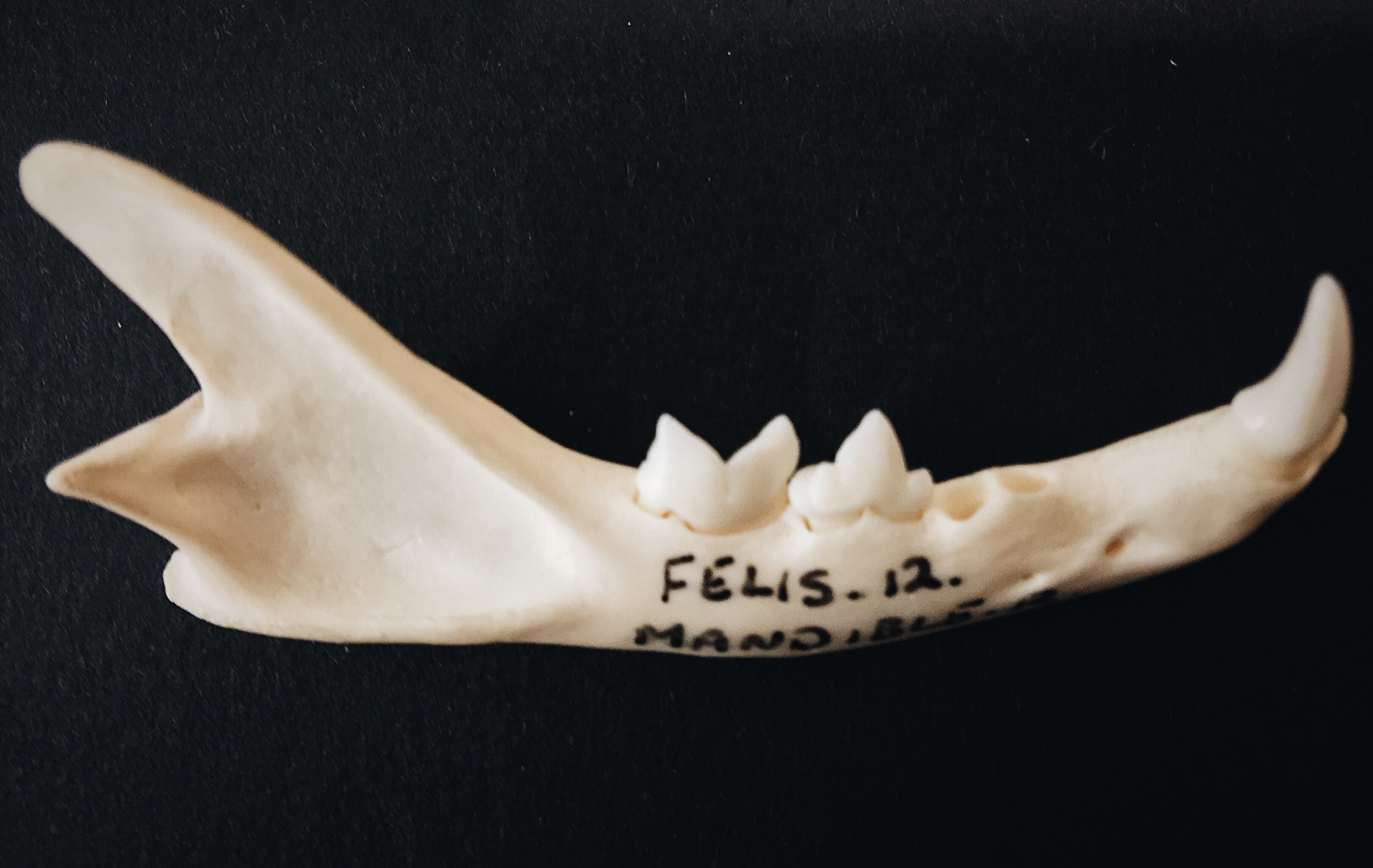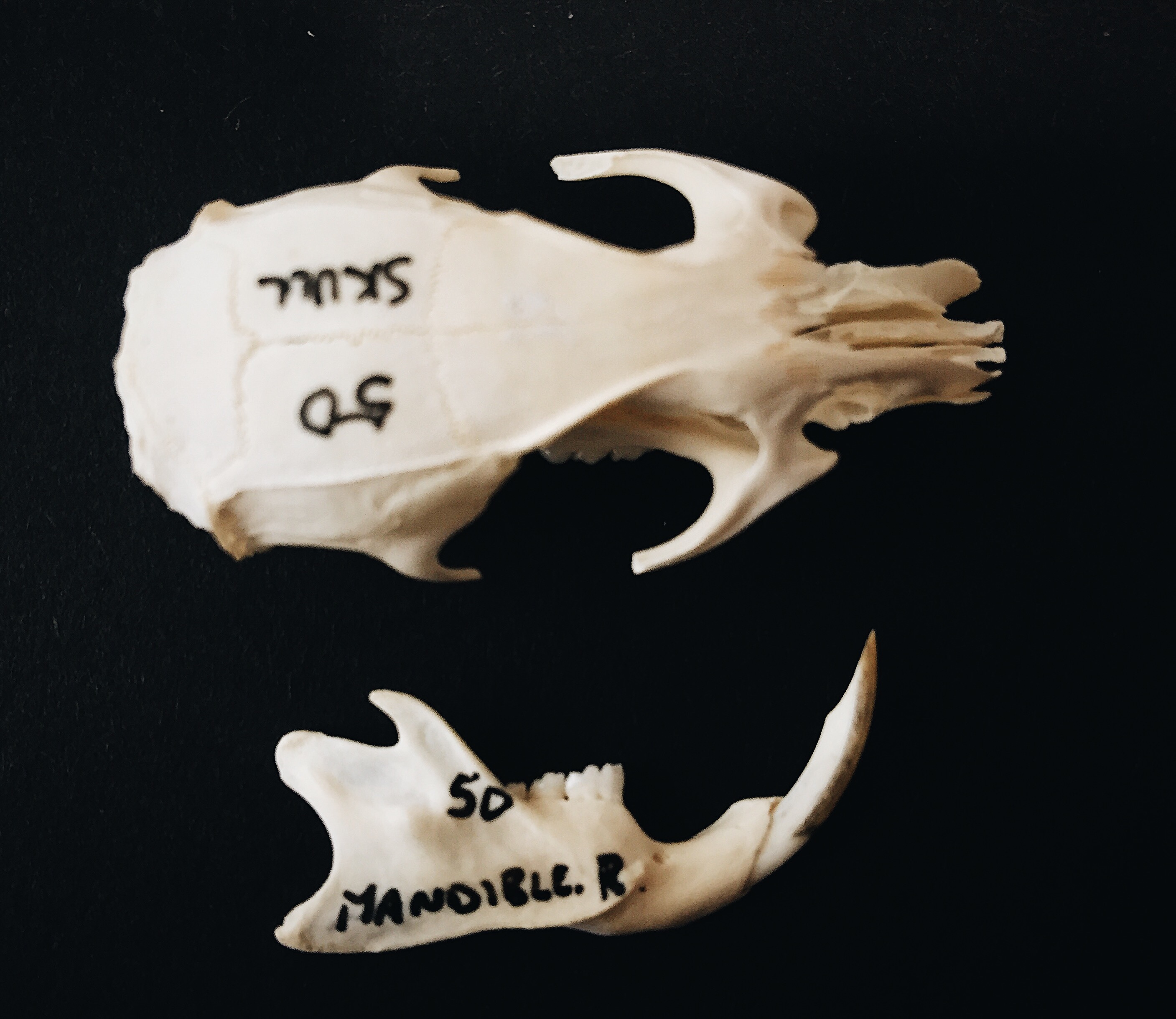
Since my last post using comparative anatomy was rather popular, I figured I should write a similar post for this week, starting with the most important part of the skeleton for zooarchaeologists (in my opinion) – teeth!
In my experience, teeth are the best skeletal elements to recover. Why? They’re one of the more easily identifiable parts of the skeleton and one of the more variable skeletal elements across different species.
Unfortunately for me, they’re also some of the…well, grossest parts of the skeleton. Nothing will put the fear of root canals and cavities in you like looking at any worn down tooth from a cow or sheep!
Here is a small sampling of teeth from different animals and how you can easily identify them, in very informal and non-technical-sounding ways:
Pig
Pig teeth might be the weirdest looking teeth I encounter regularly (besides my own…and if you’re my dentist reading this, no I will never get braces, I can’t afford them!). The easiest way to ID them is to recognise how similar they look to human teeth…but just slightly off. Basically, I like to say that the molars look like human teeth that have popped a bit like popcorn. Yes, I’m aware of how gross that is – but that’s how I remember them!

- Yuck – here are the teeth of a domestic pig.
Dog
Dog teeth have a sort of “wave”-like shape to them that makes them a bit distinct. Often, I’ve found that their molars and premolars not as pointed and sharp as a cat’s teeth (see below), but that isn’t always the case, of course. In any case, dog teeth are quite bulky in comparison to cat teeth.

Cat
Cat teeth have a somewhat similar shape to dog teeth, but I’ve found that they are somewhat more pointy than most dog teeth (although again, this may not always be the case). In comparison to dog teeth, cat teeth are also relatively smaller and not as bulky. A larger set of teeth that may look cat-like could indicate you’ve got another member of the Felidade family (i.e; lion, lynx).

Sheep
The easiest way to ID sheep teeth is to check for a “house shingle”-like appearance. I have found that in comparison to animals with similar looking teeth (cows and horses), sheep teeth are also rather thinner. Be careful, though – sheep and deer teeth are remarkably similar in size and appearance!

Cow
As mentioned above, cow teeth are similar in appearance to sheep with a slight “house shingle”-like appearance. However, given the difference in size, cow molars and premolars will be larger and bulkier, usually.

Rodents
And finally, some of the smallest teeth you’ll run into: rodents! To be frank, if you find very small teeth, it is most likely from a rodent of some kind. The front incisors may be a bit more difficult to ID if found alone as they are much larger than the other teeth and may be mistaken for a bit of rib bone. These teeth are what create the pattern of gnawing attributed to rodents that looks like long striations or lines on the bone (more on that in a future post!).

If you’re looking for a more in depth comparison of mammal teeth, I would recommend Mammal Bones and Teeth by Simon Hillson (1992). It’s a great guide that I use in my work with some really clear diagrams.
If you’re financially stable enough, why not donate to help out marginalised archaeologists in need via the Black Trowel Collective Microgrants? You can subscribe to their Patreon to become a monthly donor, or do a one-time donation via PayPal.
My work and independent research is supported almost entirely by the generosity of readers – if you’re interested in contributing a tiny bit, you can donate here.

2 thoughts on “On Animal Teeth, or Why I’m Not a Dentist”
Comments are closed.